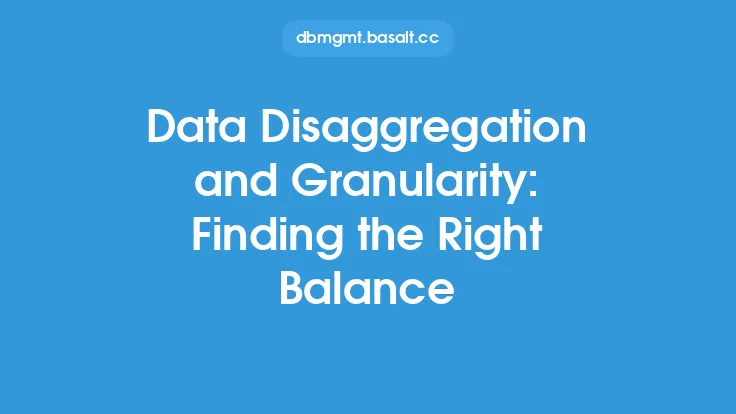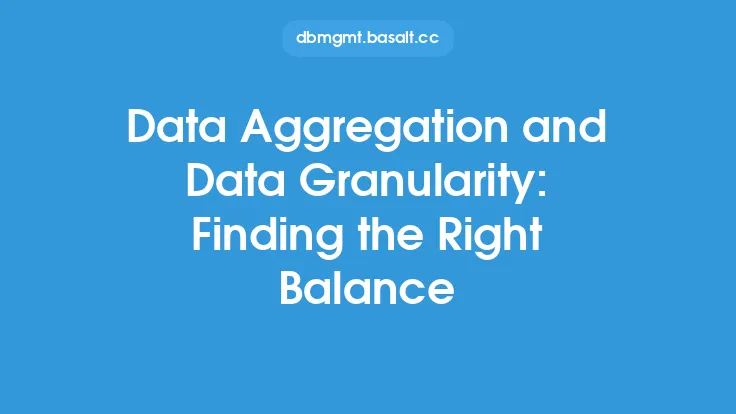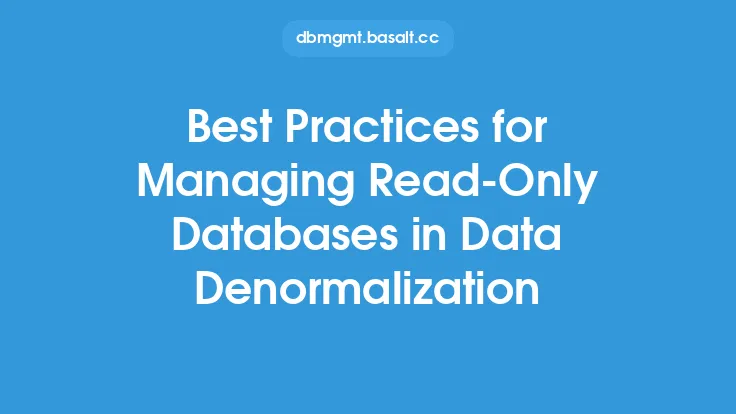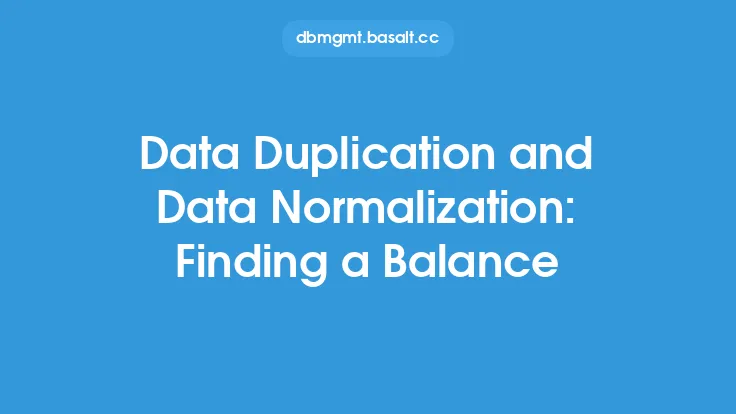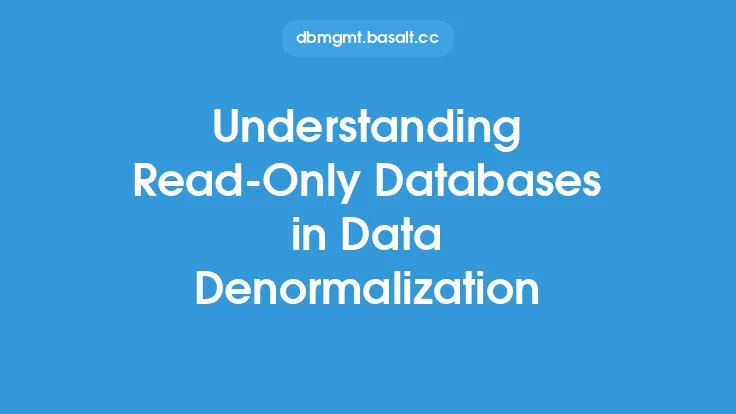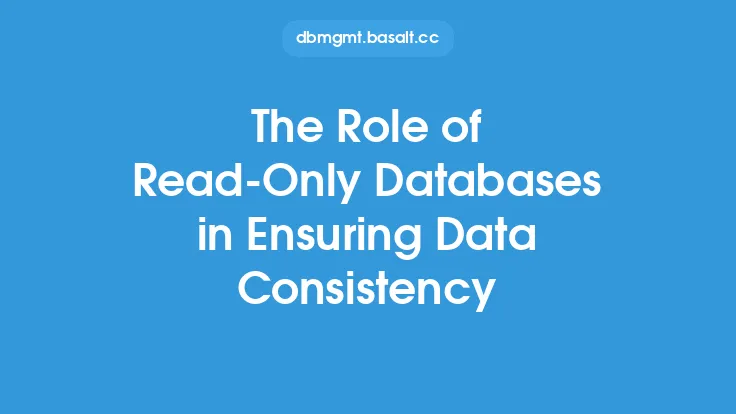When designing a database, one of the key considerations is the balance between data normalization and the use of read-only databases. Data normalization is the process of organizing data in a database to minimize data redundancy and dependency, while read-only databases are designed to provide fast and efficient data retrieval, often at the expense of data normalization. In this article, we will explore the concept of read-only databases and data normalization, and discuss how to find the right balance between these two competing goals.
Introduction to Data Normalization
Data normalization is a fundamental concept in database design that involves organizing data in a way that minimizes data redundancy and dependency. The goal of data normalization is to ensure that each piece of data is stored in one place and one place only, eliminating data inconsistencies and anomalies. There are several levels of data normalization, including first normal form (1NF), second normal form (2NF), and third normal form (3NF), each of which provides a higher level of normalization and data integrity.
Read-Only Databases and Data Denormalization
Read-only databases, on the other hand, are designed to provide fast and efficient data retrieval, often by denormalizing the data. Denormalization involves storing data in a way that is optimized for querying and retrieval, rather than for data integrity and consistency. Read-only databases often use techniques such as data replication, caching, and materialized views to improve query performance, but these techniques can also lead to data inconsistencies and anomalies if not properly managed.
Finding the Right Balance
Finding the right balance between data normalization and read-only databases requires careful consideration of the trade-offs between data integrity, query performance, and data consistency. One approach is to use a combination of normalized and denormalized data, where the normalized data is used for data integrity and consistency, and the denormalized data is used for query performance. Another approach is to use data transformation and data mapping techniques to transform the normalized data into a denormalized format that is optimized for querying and retrieval.
Data Transformation and Mapping
Data transformation and mapping are critical components of finding the right balance between data normalization and read-only databases. Data transformation involves converting the normalized data into a denormalized format that is optimized for querying and retrieval, while data mapping involves creating a mapping between the normalized and denormalized data to ensure data consistency and integrity. There are several data transformation and mapping techniques that can be used, including data warehousing, data marts, and data virtualization.
Data Warehousing and Data Marts
Data warehousing and data marts are two popular techniques for transforming and mapping data between normalized and denormalized formats. A data warehouse is a centralized repository that stores data in a denormalized format that is optimized for querying and retrieval, while a data mart is a smaller, more focused repository that stores data in a denormalized format that is optimized for a specific business function or department. Both data warehousing and data marts can be used to improve query performance and data retrieval efficiency, while also ensuring data consistency and integrity.
Data Virtualization
Data virtualization is another technique that can be used to transform and map data between normalized and denormalized formats. Data virtualization involves creating a virtual layer that abstracts the underlying data sources and provides a unified view of the data, regardless of the underlying format or structure. Data virtualization can be used to improve query performance and data retrieval efficiency, while also ensuring data consistency and integrity.
Best Practices for Finding the Right Balance
Finding the right balance between data normalization and read-only databases requires careful consideration of several best practices, including:
- Define clear data governance policies and procedures to ensure data consistency and integrity
- Use data transformation and mapping techniques to transform normalized data into denormalized formats that are optimized for querying and retrieval
- Implement data warehousing, data marts, and data virtualization techniques to improve query performance and data retrieval efficiency
- Monitor and optimize query performance and data retrieval efficiency on an ongoing basis
- Ensure that data consistency and integrity are maintained across all data sources and formats.
Conclusion
In conclusion, finding the right balance between data normalization and read-only databases is a critical component of database design and data management. By understanding the trade-offs between data integrity, query performance, and data consistency, and by using techniques such as data transformation and mapping, data warehousing, data marts, and data virtualization, organizations can ensure that their data is both consistent and retrievable, while also improving query performance and data retrieval efficiency. By following best practices and carefully considering the trade-offs between data normalization and read-only databases, organizations can find the right balance and achieve their data management goals.
